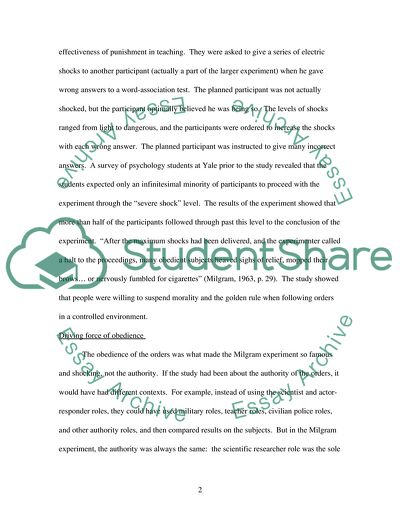Cite this document
(Modern Interpretation of the Stanley Milgram Experiment Coursework Example | Topics and Well Written Essays - 1250 words, n.d.)
Modern Interpretation of the Stanley Milgram Experiment Coursework Example | Topics and Well Written Essays - 1250 words. https://studentshare.org/psychology/1730194-modern-interpretation-of-the-stanley-milgram-experiment
Modern Interpretation of the Stanley Milgram Experiment Coursework Example | Topics and Well Written Essays - 1250 words. https://studentshare.org/psychology/1730194-modern-interpretation-of-the-stanley-milgram-experiment
(Modern Interpretation of the Stanley Milgram Experiment Coursework Example | Topics and Well Written Essays - 1250 Words)
Modern Interpretation of the Stanley Milgram Experiment Coursework Example | Topics and Well Written Essays - 1250 Words. https://studentshare.org/psychology/1730194-modern-interpretation-of-the-stanley-milgram-experiment.
Modern Interpretation of the Stanley Milgram Experiment Coursework Example | Topics and Well Written Essays - 1250 Words. https://studentshare.org/psychology/1730194-modern-interpretation-of-the-stanley-milgram-experiment.
“Modern Interpretation of the Stanley Milgram Experiment Coursework Example | Topics and Well Written Essays - 1250 Words”. https://studentshare.org/psychology/1730194-modern-interpretation-of-the-stanley-milgram-experiment.


